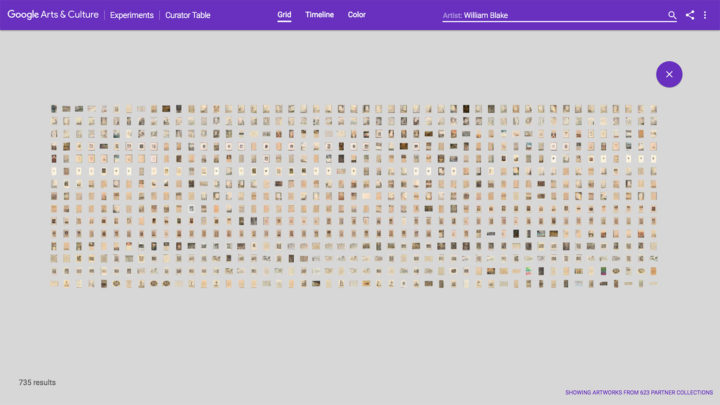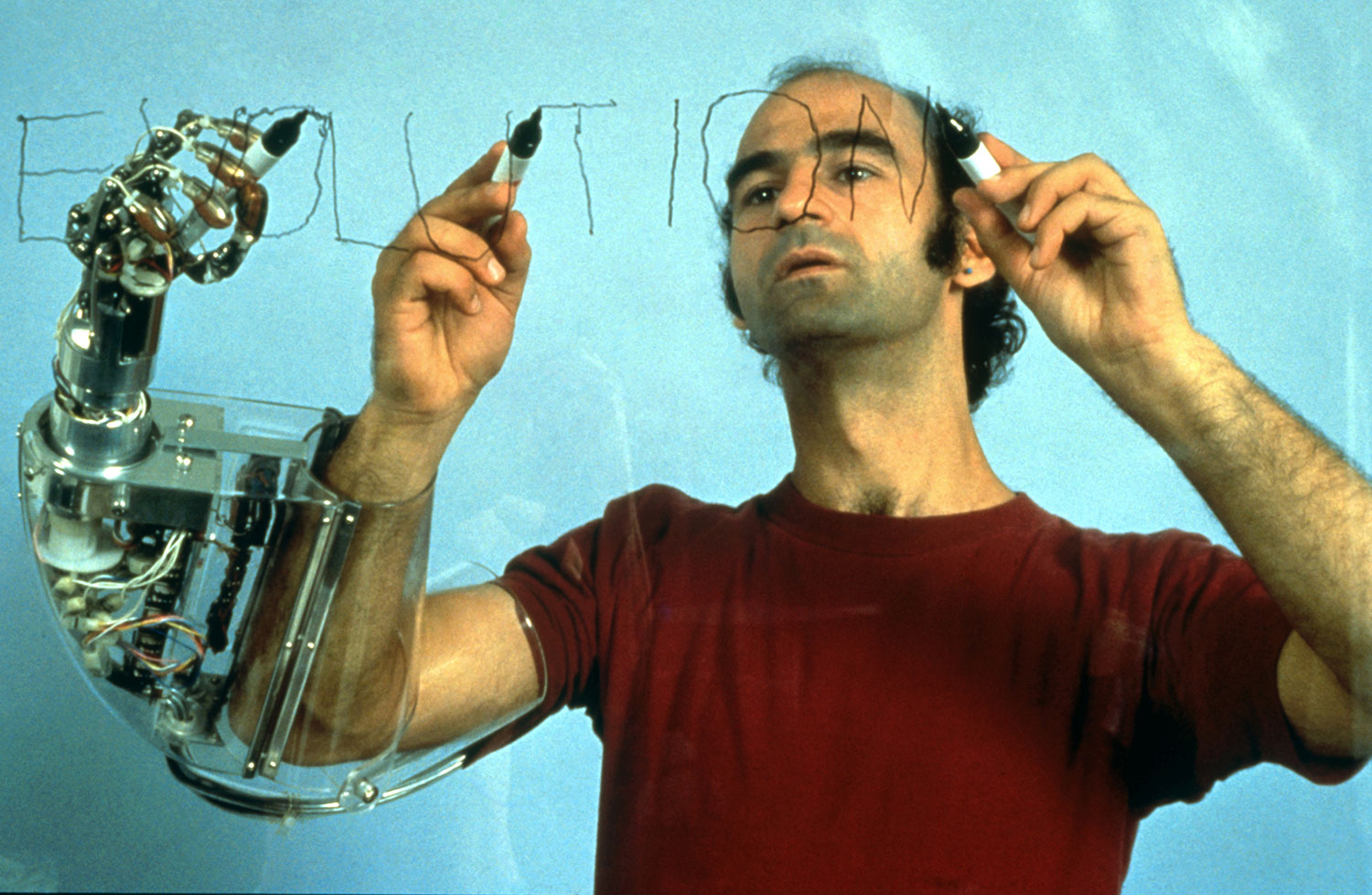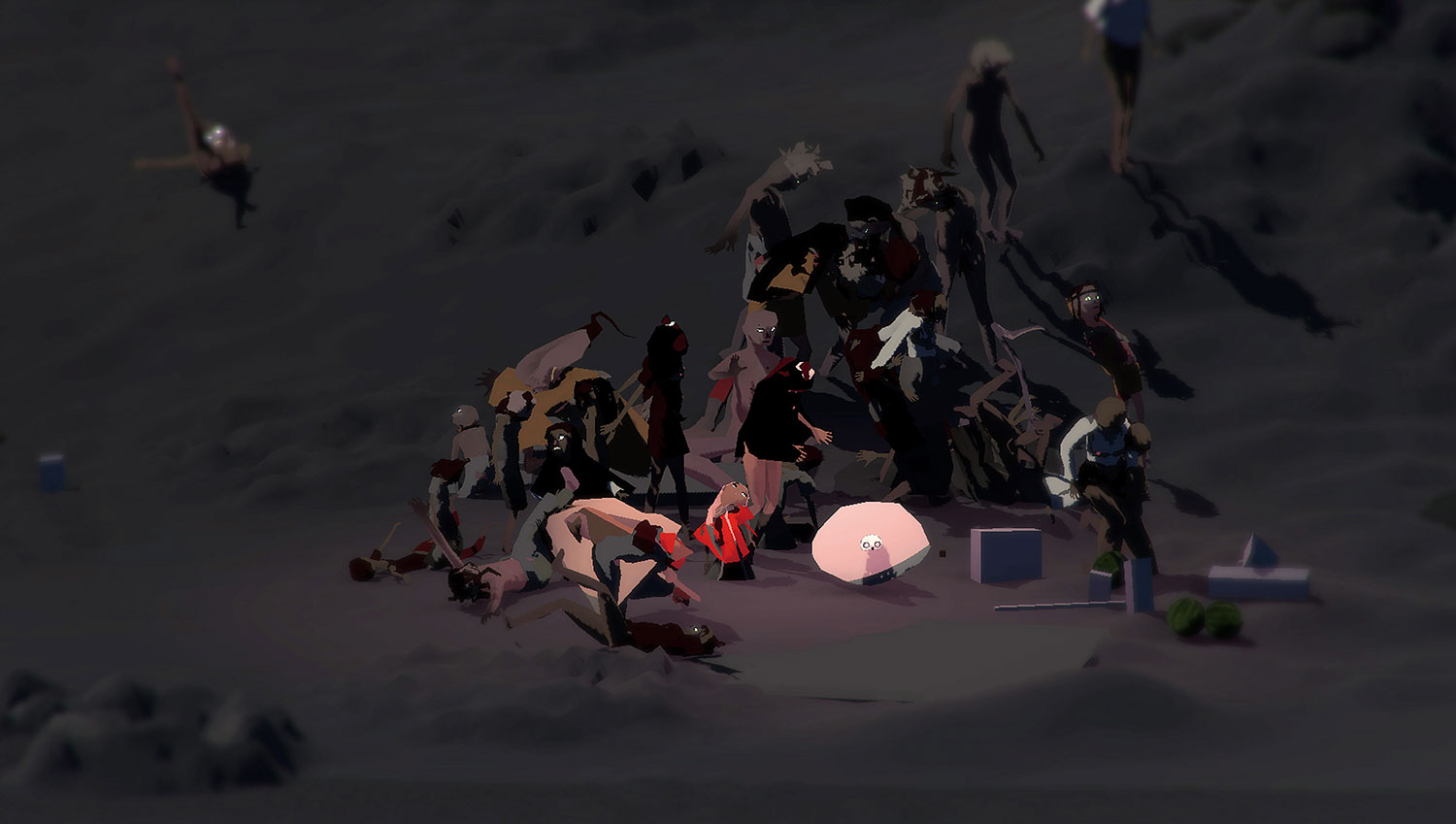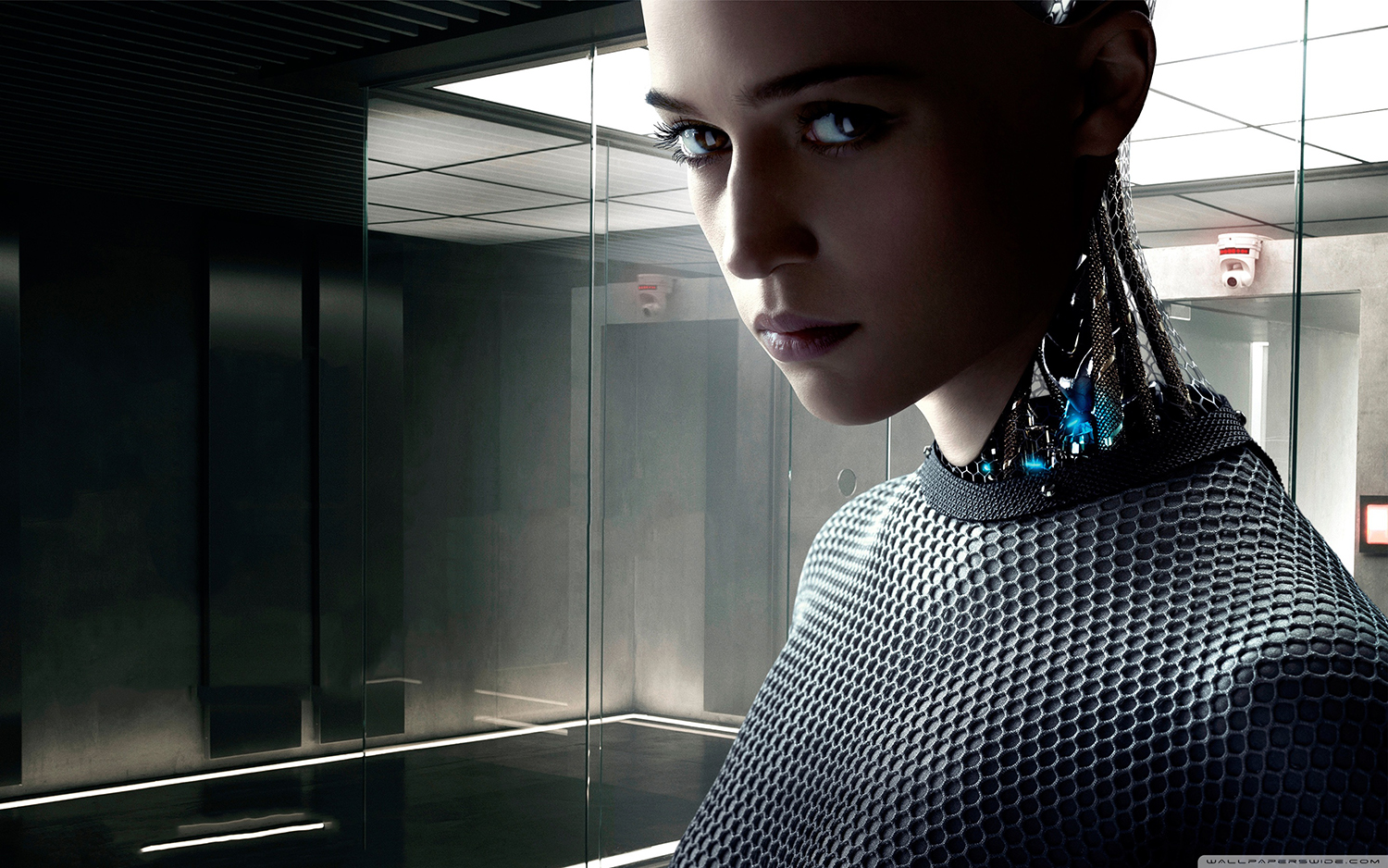
In both popular and art news media, stories of developments in the realm of art and artificial intelligence are typically greeted with a dull, sometimes wry, sense of amusement. These novelties carry neither the exhilaration nor the menace of “breakthroughs” in other areas of computer learning or predictions of labor automation. We read of a “Portrait-Painting Robot with Its Own Artistic Style” or that “Google Sets Out to Disrupt Curating With ‘Machine Learning’” and we think, Oh, wow, that’s kind of funny. Because it is impressive, of course, that they could develop a machine-learning platform capable of discovering formal similarities among far-flung works of art, but bewildering that they would.
“In artnet’s predictions for 2017,” Ben Davis begins, in a recent assessment of some of Google’s efforts in this area, “I wrote that it would be the year Artificial Intelligence would finally crack the problem of curating. That was meant as a joke — but it turns out that I was already behind the times.” Except for the “but,” this feels like a pretty good encapsulation of the present state of affairs; that is, just because we are, all of us, behind the times, doesn’t mean it’s not still a joke. Stories about the Google Cultural Institute’s “experiments” division or the Art and Artificial Intelligence Laboratory at Rutgers University and their endeavors to use AI for making or looking at art are simultaneously amazing and banal. We receive such accounts as interesting in the sense that Sianne Ngai means it — a weak and indeterminate curiosity, the blip of the unexpected. Trained on the dream of automation —an ideology of ceaseless innovation and Promethean tales of a hyperviolent future — we try to conjure an image of the AI artist but come up with a robot in beret and smock. This movie won’t write itself.
For those within the art world, a good deal of skepticism about automating art has to do with the fact that it comes from outside, from the land of tech. And techies don’t seem to get art as a social system. Will your AI cultivate all-important relationships? Will it attend dinners, get its picture in “Scene and Heard”? Will it look good in Dior, in Yohji, in Eckhaus Latta? Perhaps that’s a small matter, and the social system could remain intact:
A movie set in a future art world. The collectors, gallerists and advisors are all still there and they are all, more or less, the same, but the artists and curators have been replaced by the creators of the new algorithms.
Of the two approaches to automating art —the looking at and the making of —it is the former that has been receiving more attention. Google’s “X Degrees of Separation,” to take just one example, uses a computer-vision algorithm to find formal similarities — really just shape and color, it seems — between vast numbers of works of art cataloged in a database compiled from the collections of hundreds of museums. Choose any two images, and X Degrees will find a visual pathway between them in six to eight steps. This relies on the homogenization of all items in the database into fungible images, irrespective of material, medium, size or any other quality. But most of us are keyed into the differences between, for example, objects and images, and X Degrees doesn’t even do a particularly good job of demonstrating that things can look like other things. It is genuinely hard to imagine why it would be even mildly entertaining to anyone, let alone meaningful or useful, to see a line drawn from Starry Night to a seventeenth-century Noh mask that passes through a Van Gogh self-portrait and several other masks.

Perhaps more substantively, researchers at Rutgers developed a computer-vision algorithm for detecting artistic influence, which, in 2014, recognized a previously un-remarked upon compositional similarity between Frédéric Bazille’s Studio 9 Rue de la Condamine (1870) and Norman Rockwell’s Shuffleton’s Barber Shop (1950). Although no evidence exists to suggest Rockwell’s familiarity with Bazille’s painting, and the resemblance is, frankly, not so striking, the “discovery” at least suggests ways art historians might work with computer-vision algorithms to sort through large quantities of material and take a longer, wider-angled view –– something equivalent to Franco Moretti’s distant reading of the history of the novel. But it’s not exactly news that computers can be used to process large sets of information, nor is that insight worth the price tag of the Art and Artificial Intelligence Laboratory.
Just wait, we are told. These experiments must be understood as early steps in a long developmental process. Of course nobody’s vision of a dystopian future is one where art historians have been replaced by machines, and anyway such attempts to automate looking at art should remain, for the foreseeable future, unthreatening: the revelation that a painting bears certain compositional similarities to another rather distant one isn’t going to get you tenure in an art history department. Machines are already better at this kind of pattern recognition, and will, no doubt, get better still; but locating incidental parallelisms in painting is not the art historian’s task.
A movie about an AI that is denied tenure at a small liberal arts school and takes its revenge by hacking the college’s admissions system, allowing in a refractory but lovable party animal who ruffles more than a few feathers with his antics and disregard for PC pieties but who, in the end, teaches everyone an important lesson about having fun.
In a widely read and debated 2013 paper, “The Future of Employment,” Carl Benedikt Frey and Michael A. Osborne forecast widespread occupational “computerization” in the near future, with forty-seven percent of US employment — encompassing manual and cognitive labor — at risk of replacement. The authors analyzed 702 jobs, ranked according to the likelihood of a robot soon taking over, with 1 being the least likely, and 702 the most. The list does not include a ranking for art historians, but historians come in at a pretty safe 283, just after economists and before medical appliance technicians. Further down the list, at 131, come fine artists, including painters, sculptors and illustrators (though writers are evidently even safer still, at 123). There have been numerous critiques of Frey and Osborne’s study, but let’s add the very minor observation that, given recent AI experiments, the relative position of historians and artists should maybe be swapped.

If the designers of computer vision algorithms are asking fundamentally different questions than art historians, those building AIs to make art are, by contrast, more closely replicating what it is that artists do. While these have, so far, been mostly digital images, the possibility to scale up to sculpture, installation or relational aesthetics is certainly conceivable. The results may be silly on the whole, but in a recent Turing test, human subjects presented with works generated by the Creative Adversarial Networks (CAN), an AI developed by the Rutgers lab, and examples culled from Art Basel 2016 could not distinguish which was which. In fact, they preferred the CAN art.
So will all the painters soon be out of work? But they can’t do anything else! Painting is why they get out of bed in the morning.
In fact, any perceived threat to art as a treasured field of human activity — or to the autonomy of the work of art for that matter — is offset by the recognition of the artwork as a peculiar kind of luxury commodity. Its value depends not on costs, inputs or R&D, not on socially necessary labor time, but on socioeconomic stratification, on class antagonism from above. It’s not that you can’t afford art because art is expensive; your not being able to afford it is what makes it art. The dream of automation that animates our visions of the future is in essence a dream about maximizing profits, and there the prospect of automating artmaking founders. There is just no economic incentive. You can’t even really make a movie about an enterprising gallery owner who, sick of dealing with temperamental artists and of splitting sales 50/50, decides on a program of AI artists. She’d still have to split the sales with the programmer; might work as a romcom.
Of course there is the capitalist’s dream of automation, and then there’s the socialist’s. The old image of a future world without work and without want, of a fully automated society, conjured in particular by sci-fi writers from the Soviet utopian tradition, is enjoying renewed life among some on the left. They read the “Fragment on Machines” from the Grundrisse, in which Marx identifies the contradiction in mechanization: capital “presses to reduce labor time to a minimum, while it posits labor time, on the other side, as sole measure and source of wealth.” A society, an entire way of life, built around work that keeps eliminating jobs — these are “the material conditions to blow this foundation sky-high.” In a world without work, we can all be poets and painters. But the abolition of work, of the capitalist mode of production, would most likely mean the obsolescence of art. At least as it functions today, art would have no place in a classless society.
A future civilization. No one goes hungry and no one works. But no one makes art either — they only draw pictures.
Writers of the left, like Nick Srnicek and Alex Williams in Inventing the Future, find themselves in strange company, concurring with predictions like those of Frey and Osborne and with Silicon Valley ideologues eager to test the possibilities of a universal basic income as a means of keeping people shopping in the anticipated workless future. And yet we have every reason to believe that these automation enthusiasms are misguided. Jason E. Smith has surveyed the regular recurrence of often-panicky rhetoric about workers’ displacement by technological innovation going back almost a century. Moreover, the discussions of automation in the present fail to account for the glaring facts of declining productivity rates and meager investment in equipment and software by corporations. Much of this story is told by Robert Gordon in The Rise and Fall of American Growth, where he argues, for example, that the moment of computerization in terms of investment and productivity came and went in the 1990s. That period represented a brief respite within the historic decline that has characterized advanced capitalist economies since the early 1970s — in GDP, employment, investment, productivity, real consumption and real wages. It is absurd under these conditions to expect an imminent workless future. Instead, we have a kind of workless present, one in which capitalism is miserable but capitalists are happy: brute inequality, vast unemployment and vast numbers of low-wage, temporary jobs. This, of course, is the story of artmaking as well: precarious, freelance, self-regulating. A few artists will get rich at the whim of the architects — or passive beneficiaries — of that inequality. It’s a boring story, and a barbaric one. But it’s ours.





